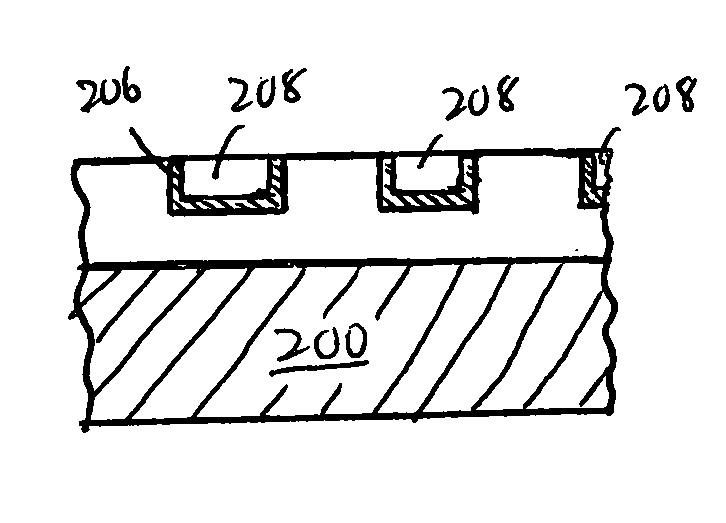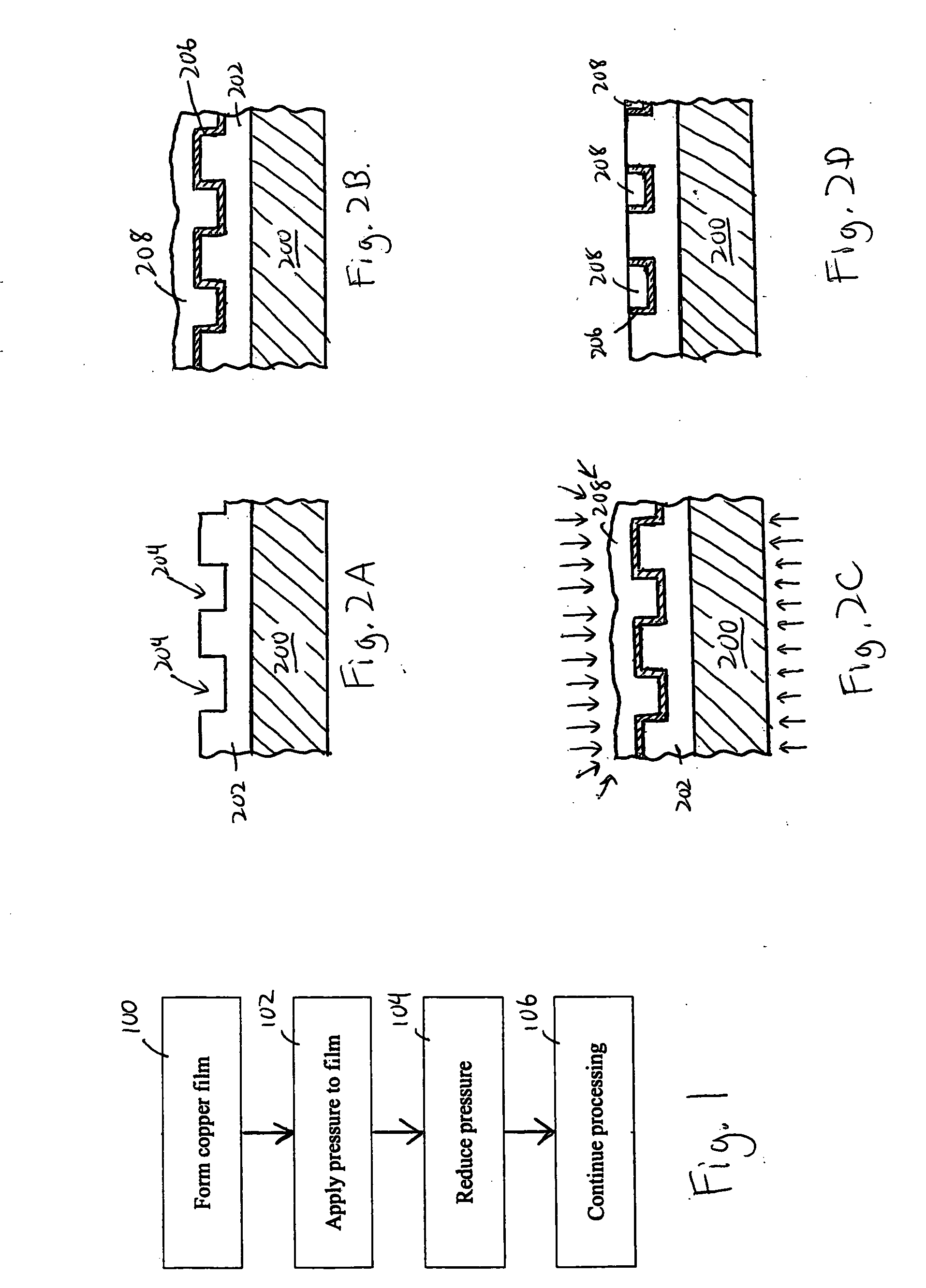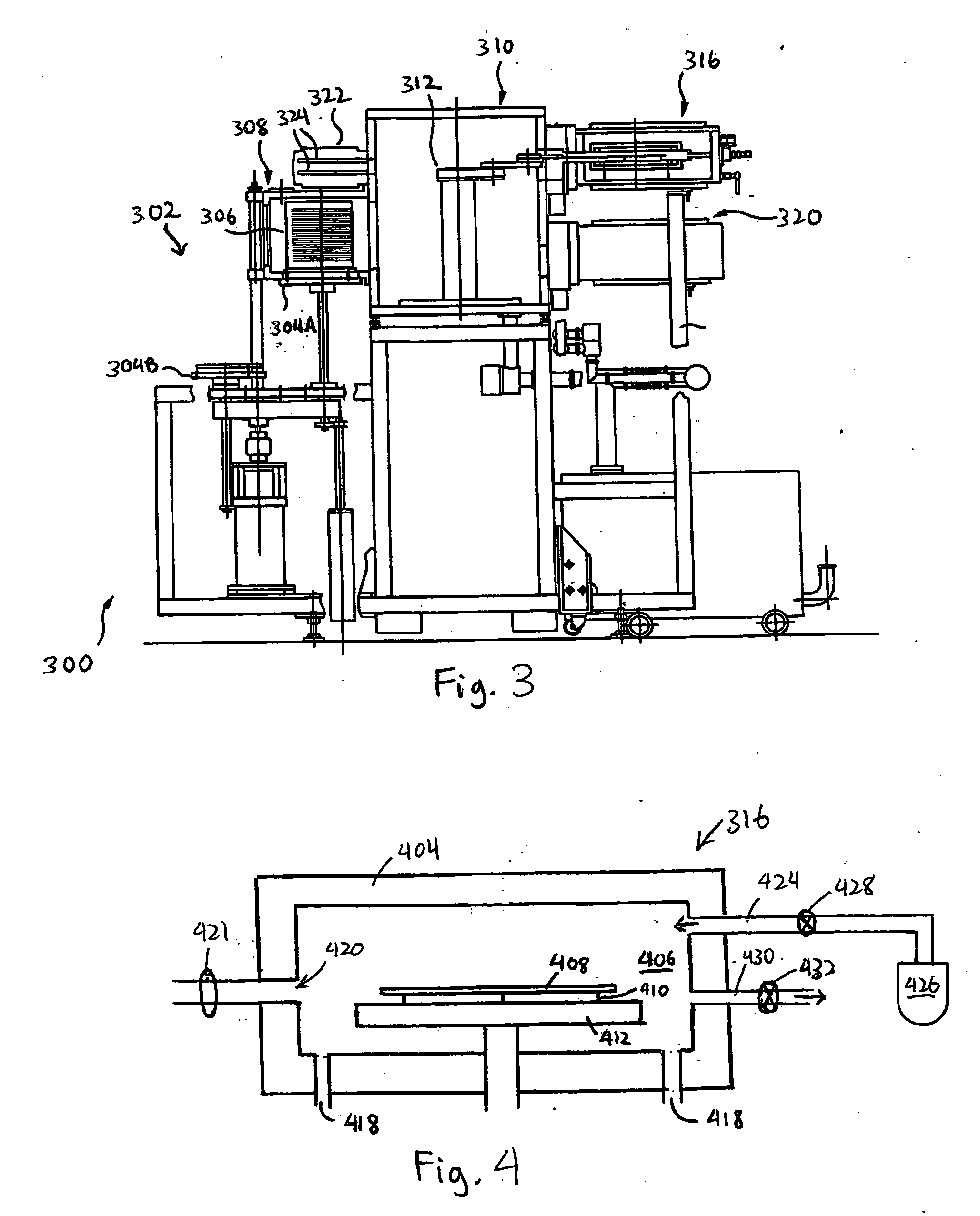High pressure treatment for improved grain growth and void reduction
a high-pressure treatment and grain technology, applied in semiconductor/solid-state device manufacturing, basic electric elements, electric devices, etc., can solve the problems of reduced resistivity, physical change of copper structure, and shrinkage of copper lines, so as to improve grain growth and reduce micro-voids , the effect of increasing the temperature in the process chamber
- Summary
- Abstract
- Description
- Claims
- Application Information
AI Technical Summary
Benefits of technology
Problems solved by technology
Method used
Image
Examples
Embodiment Construction
[0018]FIG. 1 is a flow chart showing one embodiment of the present invention for forming a copper layer on a semiconductor device during semiconductor processing. In step 100, a copper layer or film is formed on a semiconductor device in a high pressure process chamber. The copper film can be formed by any suitable conventional method, such as a dual damascene technique. In the dual damascene approach, a dielectric or insulating diffusion barrier layer is deposited over a copper layer. The dielectric layer is then patterned, e.g., by conventional masking and etching techniques, to form a two-step connection having a narrower lower portion (or via portion) exposing desired connection areas on the underlying patterned metal layer and a wider upper portion (or trench portion) that will form the next layer of metal lines. Copper is then deposited to fill the via and trench, such as by electroplating. The chamber is pressurized, in step 102, such as up to 500 atm. Chamber pressurization ...
PUM
| Property | Measurement | Unit |
|---|---|---|
| pressure | aaaaa | aaaaa |
| temperature | aaaaa | aaaaa |
| pressure | aaaaa | aaaaa |
Abstract
Description
Claims
Application Information
 Login to View More
Login to View More - R&D
- Intellectual Property
- Life Sciences
- Materials
- Tech Scout
- Unparalleled Data Quality
- Higher Quality Content
- 60% Fewer Hallucinations
Browse by: Latest US Patents, China's latest patents, Technical Efficacy Thesaurus, Application Domain, Technology Topic, Popular Technical Reports.
© 2025 PatSnap. All rights reserved.Legal|Privacy policy|Modern Slavery Act Transparency Statement|Sitemap|About US| Contact US: help@patsnap.com



